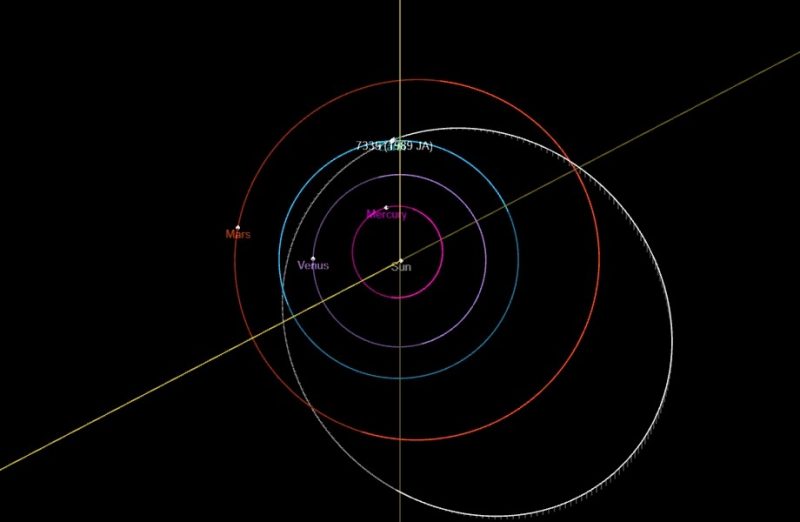An enormous asteroid four times the size of the Empire State Building is headed toward Earth — and you can watch live as it whooshes harmlessly through the night sky.
The asteroid, dubbed 7335 (1989 JA), orbits the sun once every 570 days or so, occasionally swooping a little too close to Earth for astronomers’ comfort. the rock will swing within about 2.5 million miles (4 million kilometers) of our planet — or nearly 10 times the average distance between Earth and the moon at about 10:26 a.m. EDT (2:26 UTC). That’s too far away to witness with the naked eye, but you might be able to spot it with a really powerful telescope, according to CNET (opens in new tab). Or you can watch the asteroid pass by live on the Virtual Telescope Project (opens in new tab)’s website.
While all calculations point to a clear miss, NASA has labeled the asteroid “potentially hazardous,” due to its enormous size (1.1. miles, or 1.8 km, in diameter) and relatively close proximity to our planet’s orbit. It will be the largest asteroid to make a close approach to Earth all year, according to NASA, and the space rock is estimated to whiz by at about 47,200 mph (76,000 km/h) — or 20 times faster than a bullet fired from a rifle.
Asteroid 7335 (1989 JA) won’t make another close flyby until June 23, 2055, when it will pass about 70 times farther away from Earth than the moon.
This asteroid is one of more than 29,000 near-Earth objects (NEOs) that NASA tracks each year. NEO refers to any astronomical object that will pass within about 30 million miles (48 million km) of Earth’s orbit. Most of these objects are extremely small; 7335 (1989 JA) measures larger than about 99% of NEOs that NASA follows, the agency said.
7335 (1989 JA) is also an Apollo-class asteroid — a classification that refers to asteroids that orbit the sun while periodically crossing Earth’s orbit, Live Science previously reported. Astronomers know of about 15,000 such asteroids.
Asteroid 7335 (1989 JA) is considered potentially hazardous because it could do enormous damage to our planet if its orbit changes in a way that puts the rock on a collision course with Earth. Beyond monitoring any space rocks that pose a potential threat, NASA has also begun testing the possibility of knocking a potentially hazardous asteroid off course using rockets launched from Earth.
NASA launched a spacecraft called the Double Asteroid Redirection Test (DART), which will collide head-on with the 530-foot-wide (160 meters) Dimorphos asteroid in autumn 2022. (Dimorphos is not on a collision course with Earth, but it is close enough and large enough to be a tempting target for the mission).The collision won’t destroy the asteroid outright, but it may change the rock’s orbital path slightly, Live Science previously reported.

The first flight mission for planetary defense, NASA’s Double Asteroid Redirection Test (DART) seeks to validate a method to protect Earth from the threat of an asteroid impact. By smashing a spacecraft into the smaller member of the binary asteroid system Didymos, DART aims to shift an asteroid’s orbit through kinetic impact.
Brandon has been a senior writer at Live Science since 2017, and was formerly a staff writer and editor at Reader’s Digest magazine. His writing has appeared in The Washington Post, CBS.com, the Richard Dawkins Foundation website and other outlets. He holds a bachelor’s degree in creative writing from the University of Arizona, with minors in journalism and media arts. He enjoys writing most about space, geoscience and the mysteries of the universe.